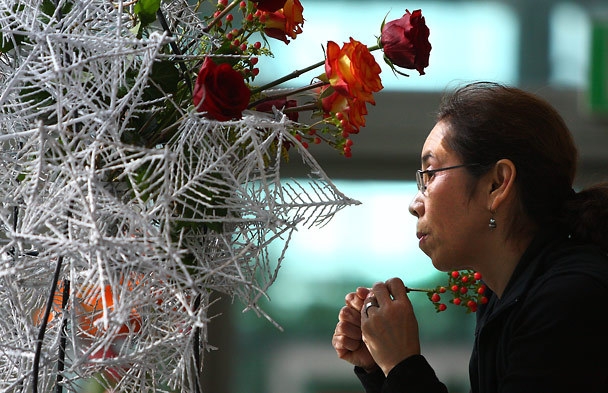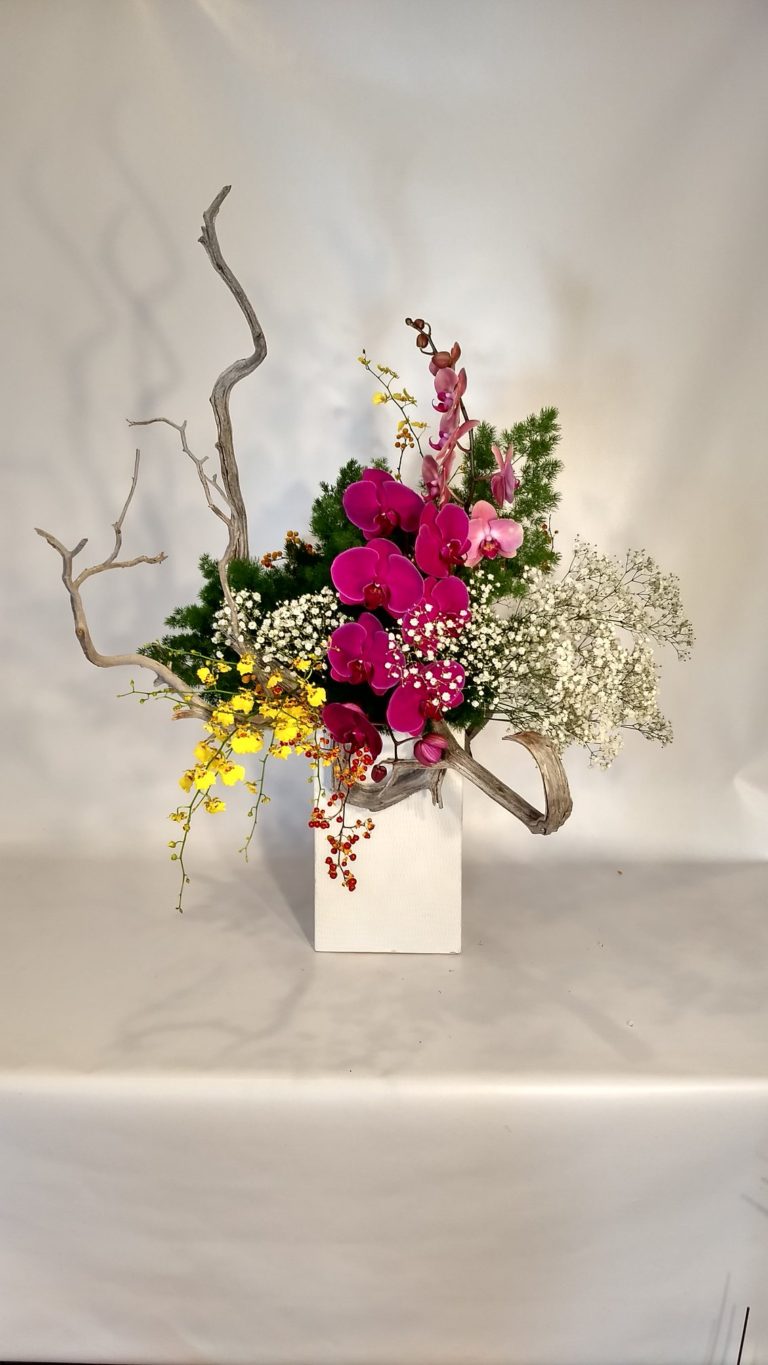
About the Teacher
Megumi Schacher has practiced Sogetsu Ikebana for 25 years and has attained the highest Sogetsu rank of riji. She teaches classes and workshops, gives demonstrations, and participates in exhibitions and workshops in the greater Seattle area and across the U.S. and in Japan. As an exhibitioner, Megumi regularly places arrangements at the Seattle Art Museum and the Japanese Consulate. She participates in the annual exhibitions held by Ikebana International and the Sogetsu Seattle Branch, and in the flower competition hosted by the Northwest Flower and Garden Show.
About Sogetsu Ikebana
Like all schools of Ikebana, the Sogetsu School has its roots in the ancient art of Japanese flower arrangement.
But for the practitioners of Sogetsu Ikebana, flower arranging is not mere decoration, but an art form.
The Sogetsu School was founded in 1927 by Sofu Teshigahara, a compatriot of the modern artists and one of Japan’s most important post war painters and sculptors.
His philosophy, shared by all members of the Sogetsu School, is that the basic rules and techniques of Ikebana are the foundation for a lifetime of creative artistic expression that can be practiced by anyone, anywhere, using any plant materials.
Sofu saw that Ikebana is not something unique to the Japanese but a form of expression, which, like all true art forms, is capable of being practiced and appreciated by everyone.
Practitioners of the Sogetsu School of Ikebana work to master the basic forms of flower arrangement and then go a step beyond, seeking always-new ways of using plant materials to create natural sculptures.
The Sogetsu School is headquartered in Japan but has branches throughout the world. The basic techniques are taught by certified instructors using textbooks written in both English and Japanese.
Students are encouraged to be individualistic and imaginative, while working within a framework that respects the relationships between space, line, depth, movement, color, form and balance.
Their Ikebana creations are meant to enrich both the creator and the viewer.
